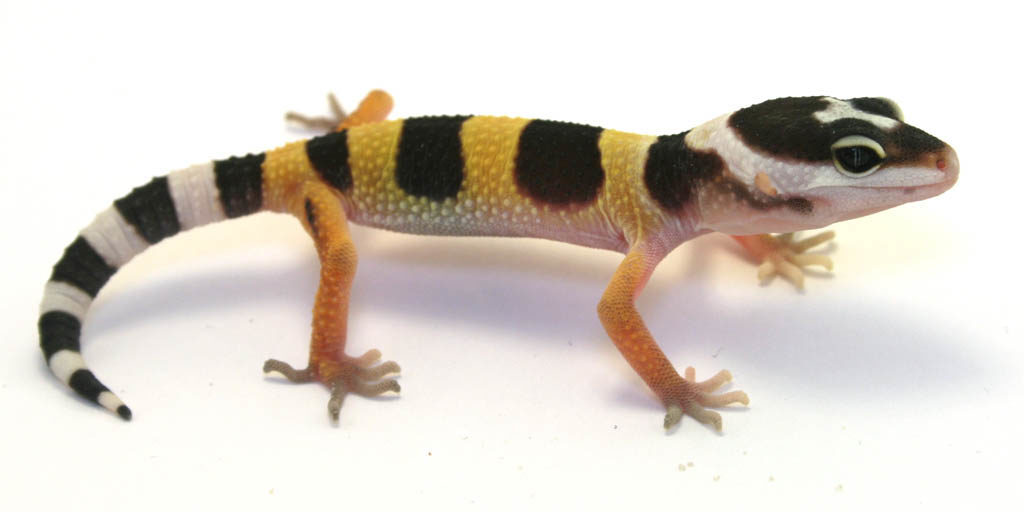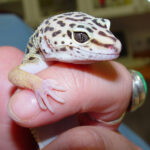Leopard geckos are a popular pet lizard known for their docile nature, ease of care, and wide variety of morphs and colors. However, like all animals, they can suffer from certain diseases and infections. One such infection is cryptosporidiosis, caused by the parasite Cryptosporidium. This microscopic parasite infects the lining of the small intestine, causing gastrointestinal illness. The infection is highly contagious and can spread rapidly through a collection or breeding facility. Fortunately, with prompt diagnosis and proper treatment, most leopard geckos can fully recover from cryptosporidiosis.
Table of Contents
Transmission of Cryptosporidium
Cryptosporidium parasites spread through the ingestion of infected fecal particles. The parasites produce hardy oocysts that can survive for lengthy periods in the environment. In leopard geckos, transmission most often occurs through contact with infected feces or ingestion of food or water contaminated with oocysts. The parasites can spread via unclean habitats, shared enclosure items, or contact with infected animals. Care must be taken to prevent cross-contamination in breeding or collection facilities. Good hygiene and quarantine practices are crucial in controlling outbreaks.
Signs and Symptoms
The most common signs of cryptosporidiosis in leopard geckos are chronic, watery diarrhea, weight loss, lethargy, and poor appetite. Infected geckos often produce excess feces due to intestinal irritation and impaired absorption of nutrients. The feces may be loose or liquid with a distinctive offensive odor. More severely affected geckos can become emaciated and dehydrated without treatment. They may also vomit, strain to defecate, or prolapse their hemipenis or cloaca.
Some infected geckos display no obvious clinical signs, acting as asymptomatic carriers. These carriers still shed infectious oocysts in their feces, serving as sources of infection for other apparently healthy geckos. Cryptosporidium oocysts can survive even harsh environmental conditions for months at a time. As few as five to ten oocysts may be enough to transmit infection to a new host.
Diagnosis
Diagnosing cryptosporidiosis requires laboratory testing of fresh fecal samples. Oocysts are tiny and cannot be seen with the naked eye. Fecal smears, flotations, antigen detection assays, or PCR tests allow veterinarians to identify Cryptosporidium oocysts. In a veterinary clinic, infected animals must be strictly isolated to prevent contamination of housing areas, equipment, or other patients.
At home, pet owners noticing symptoms should collect fresh fecal samples and schedule a veterinary appointment for proper diagnostic testing. Cleanliness is vital – bleaching habitats between periods of use can help control parasite numbers. Sick leopard geckos should be quarantined while undergoing treatment.
Treatment
There is no specific drug approved for treating cryptosporidiosis in reptiles. Supportive care with fluid therapy, nutritional support, and environmental management form the basis of therapy. Infected animals kept fully hydrated can often recover with time as their immune response fights off the infection.
Oral or injectable antibiotic therapy may be used to control secondary bacterial infections resulting from cryptosporidiosis. Anti-protozoal medications like paromomycin, azithromycin, or nitazoxanide may help resolve symptoms faster, but do not reliably eliminate Cryptosporidium infection. Repeat courses of treatment are often required, and medication dosages must be carefully calibrated for leopard geckos’ small body size.
Even after symptoms resolve, geckos should be retested at least twice over a 60-90 day period to confirm elimination of the parasite. Continued isolation protocols are essential until fecal tests are definitively negative.
Prognosis
With aggressive therapy, supportive care, and excellent husbandry, the prognosis for cryptosporidiosis is generally good. Healthy adult leopard geckos often recover fully if the infection is caught and treated promptly. Younger, older or immunocompromised geckos tend to suffer more severely from cryptosporidiosis and can sometimes die without intense therapy.
Prevention
Preventing introduction of Cryptosporidium is key, as treating established infections can be challenging. Quarantine and screening new arrivals, plus basic biosecurity measures, can help control this highly contagious parasite. Bleaching cages, washing hands vigorously after contact, and dedicating equipment to individual animals limits opportunities for transmission. Avoiding exposure to wild insects that may carry oocysts can also reduce risk.
In facilities housing multiple geckos, separating healthy from infected animals using dedicated rooms, tools and staff is critical for containment. Meticulous daily husbandry focused on hygiene and strict cleaning protocols in animal areas can help curb outbreaks. Keeping accurate records aids in tracking infections within a collection.
While frustrating to treat, with concerted effort, watchfulness and proper husbandry techniques, leopard gecko breeders and pet owners can successfully manage cryptosporidiosis infections. Stopping the spread of this stubborn parasite requires vigilance, but the reward is healthy, thriving geckos. Consistent prevention and biosecurity provide the best safeguard against Cryptosporidium transmission. I sincerely hope you find this “Cryptosporidiosis in Leopard geckos” article helpful.





